#android games developer
Explore tagged Tumblr posts
Text
Exploring IoT Integration in Mobile Android Apps

Introduction
The Internet of Things (IoT) has revolutionized the way we interact with technology, seamlessly connecting devices and enabling new levels of automation and efficiency. With the rapid advancement of IoT technology, the integration of IoT capabilities into mobile Android apps has become a key area of focus for developers and businesses alike. This integration not only enhances the functionality of apps but also opens up new opportunities for innovation and user engagement.
In this comprehensive guide, we will explore the various aspects of IoT integration in mobile Android apps. We will delve into the technical details, discuss the role of Android game developers and companies, and examine the potential benefits and challenges of IoT integration. Additionally, we will touch on relevant keywords such as android game development, android game developer, Android game development company, and more to provide a well-rounded understanding of how IoT can be leveraged in the mobile gaming industry.
Understanding IoT and Its Impact on Mobile Apps
What is IoT?
The Internet of Things (IoT) refers to the network of interconnected devices that communicate with each other over the internet. These devices, ranging from sensors and smart appliances to wearables and vehicles, collect and exchange data, enabling automation, remote control, and real-time monitoring. IoT technology has the potential to transform various industries, including healthcare, agriculture, manufacturing, and, of course, mobile app development.
The Role of IoT in Mobile App Development
The integration of IoT with mobile apps allows for enhanced functionality, improved user experiences, and the creation of new services and solutions. In the context of Android apps, IoT integration can enable features such as:
Remote Control: Users can control IoT-enabled devices remotely through their Android apps, such as adjusting smart thermostats, locking doors, or managing home security systems.
Real-Time Monitoring: IoT sensors can provide real-time data to Android apps, allowing users to monitor conditions such as temperature, humidity, or air quality.
Automation: IoT-enabled apps can automate tasks based on predefined conditions, such as turning off lights when a user leaves the house or adjusting irrigation systems based on weather data.
Enhanced User Interaction: IoT integration can create new opportunities for user interaction, such as gamifying fitness activities through wearables or creating immersive experiences in gaming.
IoT Integration in Android Game Development
The Intersection of IoT and Mobile Gaming
The gaming industry is one of the most innovative sectors when it comes to adopting new technologies, and IoT is no exception. IoT integration in mobile gaming can lead to the creation of more immersive, interactive, and personalised experiences. Android game developers are increasingly exploring ways to incorporate IoT capabilities into their games, leveraging the connectivity and data-sharing potential of IoT devices.
Use Cases for IoT in Android Games
Here are some examples of how IoT can be integrated into Android games:
1. Wearable Devices and Fitness Games
Wearable devices, such as fitness trackers and smartwatches, can be integrated with Android games to create fitness-based challenges and activities. For example, a game could track a player's steps, heart rate, and activity levels, rewarding them with in-game currency or achievements for meeting fitness goals. This not only encourages physical activity but also adds a layer of interactivity to the gaming experience.
2. Smart Home Integration and Augmented Reality (AR) Games
IoT devices in smart homes can be used to enhance augmented reality (AR) games. For example, an AR game could interact with smart lights, speakers, and other home devices to create a more immersive experience. Players could use their Android devices to explore a virtual world that responds to their physical environment, with lighting, sound, and temperature changes synced to the gameplay.
3. Real-Time Multiplayer Games with IoT Sensors
IoT sensors can be used to create real-time multiplayer games that rely on environmental data. For example, a racing game could use IoT sensors in smart vehicles to track real-time speed, location, and other metrics, allowing players to compete against each other in real-world conditions. This type of integration could lead to new and innovative gameplay experiences that blur the line between the virtual and physical worlds.
Benefits of IoT Integration in Android Games
Integrating IoT capabilities into Android games offers several benefits for both developers and players:
Enhanced Immersion: IoT devices can create a more immersive gaming experience by incorporating real-world data and interactions into the game.
Personalized Gameplay: IoT integration allows for personalized gameplay experiences based on the player's environment, health data, and preferences.
Increased Engagement: By leveraging IoT devices, developers can create unique challenges and rewards that encourage players to stay engaged and return to the game regularly.
New Revenue Streams: IoT-enabled games can open up new revenue opportunities, such as selling compatible IoT devices, offering premium features, or providing subscription-based services.
Challenges of IoT Integration in Android Games
While IoT integration offers many exciting possibilities, it also presents several challenges that Android game developers must address:
Complexity of Implementation: Integrating IoT capabilities into a game requires expertise in both Android game programming and IoT technology. This can increase the complexity of development and require additional resources.
Security and Privacy Concerns: IoT devices often collect sensitive data, such as health metrics or location information. Ensuring the security and privacy of this data is critical to maintaining player trust.
Compatibility and Interoperability: IoT devices come in many different forms, with varying standards and protocols. Ensuring compatibility between the game and different IoT devices can be challenging.
Increased Development Costs: The additional complexity of IoT integration can lead to higher Android game development costs, which may be a barrier for smaller studios or independent developers.
Technical Aspects of IoT Integration in Android Apps
Key Components of IoT Integration
To successfully integrate IoT capabilities into an Android app, developers must consider several key components:
1. IoT Devices and Sensors
The first step in IoT integration is selecting the appropriate IoT devices and sensors that will interact with the Android app. These devices could include wearables, smart home appliances, environmental sensors, and more. It's important to choose devices that align with the app's functionality and use case.
2. Communication Protocols
IoT devices use various communication protocols to transmit data to and from the Android app. Some common protocols include:
Bluetooth Low Energy (BLE): Used for short-range communication with wearables, beacons, and other nearby devices.
Wi-Fi: Enables communication with IoT devices over a local network or the internet.
MQTT (Message Queuing Telemetry Transport): A lightweight messaging protocol commonly used in IoT applications for real-time data transmission.
HTTP/HTTPS: Standard web protocols used for communication between IoT devices and cloud services.
Choosing the right protocol depends on factors such as the type of IoT device, data transmission requirements, and network conditions.
3. Cloud Integration
Many IoT applications rely on cloud services to store, process, and analyze data collected from IoT devices. Cloud platforms such as AWS IoT, Google Cloud IoT, and Microsoft Azure IoT offer tools and services for managing IoT data, including real-time analytics, machine learning, and data storage. Integrating the Android app with a cloud platform allows developers to scale their IoT solutions and provide advanced features such as remote monitoring and automation.
4. Data Processing and Analysis
IoT devices generate large volumes of data, which must be processed and analyzed to extract meaningful insights. This data processing can occur on the device itself (edge computing), on the Android app, or in the cloud. Developers must decide where to process the data based on factors such as latency, bandwidth, and computational power.
5. User Interface (UI) and User Experience (UX) Design
The UI and UX design of an IoT-enabled Android app is critical to ensuring that users can easily interact with IoT devices and access the data they need. This involves designing intuitive controls, real-time data visualizations, and responsive interfaces that work across different devices and screen sizes.
Technical Implementation: Step-by-Step Guide
Here is a step-by-step guide to implementing IoT integration in an Android app:
1. Set Up the Development Environment
Start by setting up your development environment using Android Studio, the official IDE for Android app development. Android Studio provides all the tools you need to write, test, and deploy your IoT-enabled app.
Install Android Studio: Download and install Android Studio from the official website. Ensure that you have the latest version with all necessary SDKs and libraries.
Set Up Dependencies: Add dependencies for IoT communication protocols, such as Bluetooth, Wi-Fi, and MQTT, in your app's build.gradle file. For example, you can add the paho-mqtt library for MQTT communication.
2. Connect to IoT Devices
Next, establish a connection between your Android app and the IoT devices you plan to use. This involves configuring the communication protocols and writing the necessary code to send and receive data.
Bluetooth Connection: If you're using BLE devices, use the BluetoothAdapter and BluetoothGatt classes to scan for devices, establish connections, and read/write data.
Wi-Fi Connection: For Wi-Fi-enabled devices, use the WifiManager class to connect to the local network and communicate with devices via HTTP requests.
MQTT Communication: To use MQTT, create an MQTT client using the MqttAndroidClient class and connect to the MQTT broker. Subscribe to topics to receive messages from IoT devices and publish messages to control the devices.
3. Integrate Cloud Services
If your IoT app requires cloud integration, set up the necessary cloud services to handle data storage, processing, and analysis.
Choose a Cloud Platform: Select a cloud platform that meets your app's needs. For example, AWS IoT provides tools for device management, data storage, and real-time analytics.
Set Up Data Streams: Configure data streams to send IoT data from your Android app to the cloud. Use cloud APIs to retrieve data from the cloud and display it in the app.
Implement Data Processing: Use cloud services such as AWS Lambda or Google Cloud Functions to process IoT data in real-time. Implement machine learning models or data analytics pipelines to gain insights from the data.
4. Design the User Interface
Create a user-friendly interface that allows users to interact with IoT devices and access real-time data.
Control Interfaces: Design intuitive controls for managing IoT devices, such as toggles, sliders, and buttons. Ensure that the controls are responsive and provide feedback to the user.
Data Visualization: Use charts, graphs, and gauges to display real-time data from IoT devices. Ensure that the data is presented in a clear and meaningful way.
Responsive Design: Design the UI to be responsive across different screen sizes and orientations. Use Android's layout tools to create flexible layouts that adapt to various devices.
5. Test and Debug
Thorough testing is essential to ensure that your IoT-enabled app functions correctly and provides a seamless user experience.
Unit Testing: Write unit tests to verify the functionality of individual components, such as communication protocols and data processing algorithms.
Integration Testing: Perform integration testing to ensure that all components work together as expected. Test the app's interaction with IoT devices, cloud services, and the user interface.
Field Testing: Test the app in real-world conditions with actual IoT devices. This helps identify issues related to connectivity, data transmission, and user interaction.
6. Optimize for Performance and Security
Optimizing your IoT app for performance and security is crucial to delivering a reliable and secure user experience.
Performance Optimization: Optimize data transmission and processing to reduce latency and improve responsiveness. Use caching, compression, and other techniques to minimize bandwidth usage.
Security Best Practices: Implement security best practices, such as encrypting data in transit, securing communication channels, and using authentication and authorization mechanisms. Protect sensitive user data and ensure compliance with relevant regulations.
7. Deploy and Monitor
Once your app is ready, deploy it to the Google Play Store or distribute it through other channels. After deployment, monitor the app's performance and user feedback to identify areas for improvement.
Deploy to Google Play: Publish your app on the Google Play Store, following the submission guidelines and requirements. Provide a detailed app description, screenshots, and promotional materials to attract users.
Monitor Performance: Use analytics tools to monitor the app's performance, usage patterns, and user feedback. Identify and address any issues or bugs that arise after deployment.
Release Updates: Regularly update the app to introduce new features, fix bugs, and improve performance. Engage with your user community to gather feedback and make data-driven improvements.
The Role of Android Game Development Companies in IoT Integration
Android game development companies play a crucial role in the successful integration of IoT capabilities into mobile games. These companies offer a range of services and expertise that can help developers create, integrate, and optimize IoT-enabled games.
1. Expertise in Game Design and IoT Technology
Android game development companies have extensive experience in both game design and IoT technology, allowing them to create engaging and innovative IoT-enabled games. Their expertise ensures that the game mechanics and IoT interactions are seamlessly integrated to provide a compelling experience for players.
2. Technical Implementation and Integration
The technical implementation of IoT integration in Android games requires specialized knowledge of Android game programming, communication protocols, and cloud services. Android game development companies have the technical expertise to handle these complexities, ensuring that the IoT features are implemented correctly and function as intended.
3. Cost Considerations and Budget Management
Integrating IoT capabilities into a game can increase the overall android game development cost. Android game development companies can help manage these costs by providing accurate budget estimates, optimizing resources, and identifying cost-effective solutions.
4. Ongoing Support and Updates
Successful IoT-enabled games require continuous improvement and updates to keep players engaged. Android game development companies can provide ongoing support, including updates, bug fixes, and performance enhancements. They can also use data analytics to continuously optimize the game and its IoT features.
Future Trends in IoT Integration for Android Apps
As IoT technology continues to evolve, new trends and innovations are emerging that will shape the future of IoT integration in Android apps:
1. Edge Computing and AI Integration
Edge computing involves processing data closer to the source (e.g., on the IoT device itself) rather than in the cloud. This approach reduces latency and bandwidth usage, enabling real-time data processing and decision-making. Integrating AI algorithms with edge computing allows for advanced features such as predictive maintenance, anomaly detection, and personalized user experiences.
2. 5G and Enhanced Connectivity
The rollout of 5G networks will significantly enhance the connectivity and speed of IoT devices, enabling more complex and data-intensive applications. With 5G, Android apps can support real-time video streaming, high-definition gaming, and large-scale IoT deployments with minimal latency.
3. Blockchain for IoT Security
Blockchain technology offers a decentralized and secure method for managing IoT data and transactions. By integrating blockchain with IoT, Android apps can ensure the integrity and security of data, prevent unauthorized access, and enable secure peer-to-peer interactions.
4. Augmented Reality (AR) and IoT Integration
The combination of AR and IoT has the potential to create immersive and interactive experiences that bridge the gap between the digital and physical worlds. AR-enabled Android apps can overlay real-time data from IoT devices onto the user's environment, providing valuable insights and enhancing user engagement.
Conclusion
IoT integration in mobile Android apps offers exciting opportunities for innovation, enhanced functionality, and improved user experiences. By leveraging IoT capabilities, Android game developers can create immersive, interactive, and personalised games that stand out in a competitive market.
However, IoT integration also presents challenges, including the complexity of implementation, security concerns, and increased development costs. Android game development companies play a crucial role in addressing these challenges, offering expertise in game design, technical implementation, and ongoing support.
As IoT technology continues to evolve, new trends and innovations will emerge, shaping the future of IoT-enabled Android apps. Whether you are an independent Android game developer or part of a larger android game development studio, understanding and implementing IoT integration can help you create cutting-edge apps that delight users and drive long-term success in the mobile gaming industry.
#game development#android app development#android games#android game development services#android games developer#android game development company
0 notes
Text
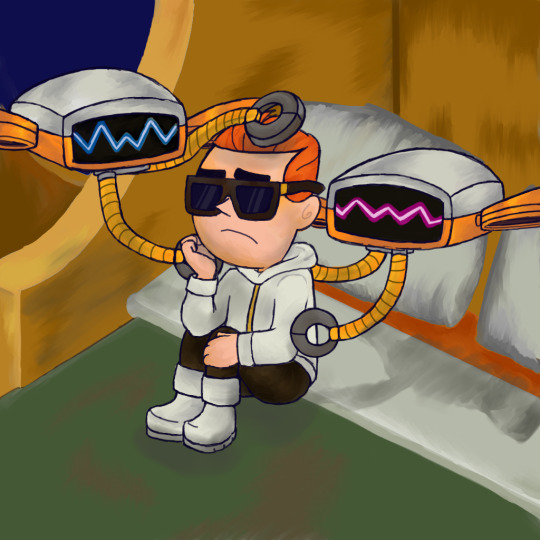
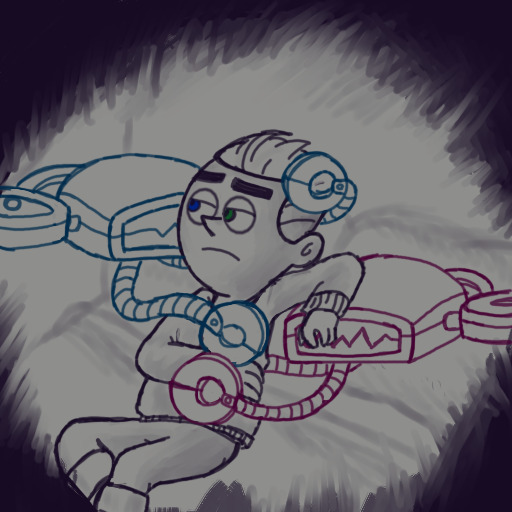
"I would hug you, but I do not have human arms or warmth."
#fairly oddparents fanart#fairly odd parents a new wish#dev dimmadome#development devin dimmadome#au pairs#o pairs#my art#i rewatched that clip and got really sad#maybe it's the autism but i get very attached to droids/robots and the like#plus these things HAVE to be sentient. at least a little#they're truly both Dale's saddest little creations#someone give that kid a hug#i may have forgotten to eat but you know what. i'm content.#the au pairs CARE about dev trust me guys#he's just their little guy they have to protect him#as a kid i loved data in st@r trek so take that as you will#still do#currently love isaac from the 0rville#and samuel in the alien game#what can i say i'm a sucker for androids and artificial lifeforms#fop fanart#fairly oddparents
70 notes
·
View notes
Text
Irredeamable developpement retrospective Part 4: The city of dolls Well, took us some time, but we finally reached a project that actually got some gameplay. Not much mind you, didnt even finish the first area, but youll probably notice some stuff that did manage to make its way into irredeamable in some form. So this game was meant to be a simple, self-contained story to introduce the new setting of the fountain (aint that familiar) It was about this city whose entire economy and structure was built around hyper-inteligent android/animatronics called the dolls. Here is one with a human for comparison. Aint they cute? (the horns were meant to be some kind of stylised antennas)

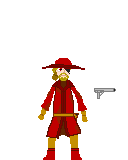
Everything was going fine for the city, until one day where the dolls appeared to suddenly go mad. They became violent, unhinged, destructive, causing a terrible riot to wage through the city, forcing the local authorities to take action. (the object on the right is a doll recharge station, which would be used to save and heal)
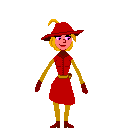

That`s where the player character comes in. Cassy-A, a new military doll prototype is sent through the ravaged streets of the city to try and find the source of the madness that has taken over the dolls and stop the riots. Unlike most dolls, her humanoid proportions and appearance allow her to blend amongst humans and her intelligence and ability to adapt is far beyond the usual doll.
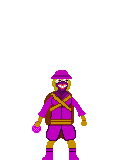
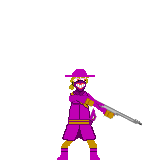
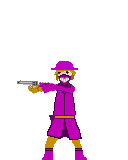
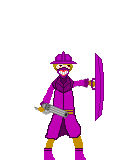

For the first few areas, Cassy fight against the maddened dolls and human rioters until she is met with a very unusual masked doll, Smile/Smiley.


Unlike the usual doll who are only capable of speaking in pre-recorded sentence, Smile can piece out speech from diverse recordings, delivering her intentions to free the dolls from their metal prison and offering for Cassy to join her. As expected, Cassy refuses and defeats Smile, only for a nuke to detonate and raze the city. Cassy consciousness is then rewinded and she is brought back to the moment she was activated. With her new understanding of what is to come, she now has to make different decisions if she wishes to stop Smile's plans and save the city from destruction.
And here come the struckture of the game, where the player must explore different paths, to gather information and find how to stop the nuke and any other threat the city might be facing. So now that we got the premises set up, here are some of the plans i had made for it.
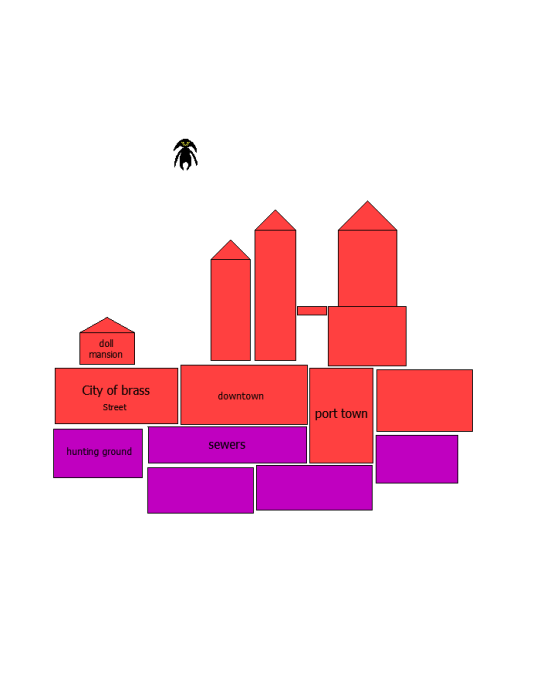

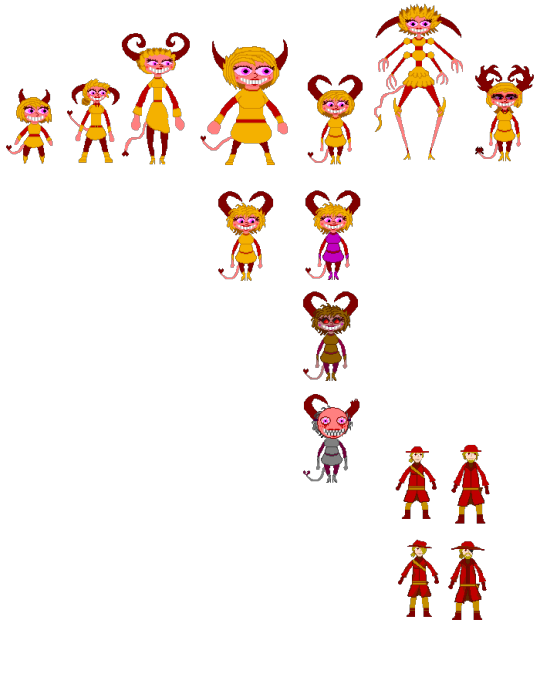
This one shows a bunch of different dolls. They come in all kind of shapes and size but generally were tough, bulky ennemies with sur-human strength, abilities to control energy/electromagnetism and even some built-in weapons for military models like the seraph.
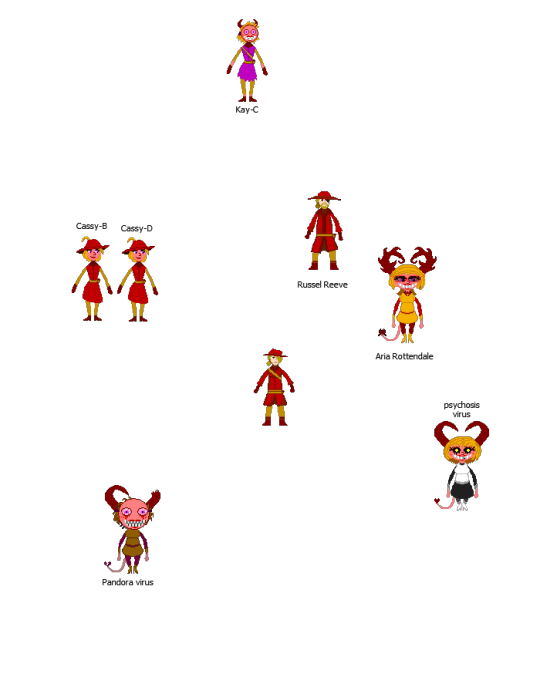
This one shows some notable characters, such as Reeve, the commander of the city of dolls military. Kay-C a Cassy model doll that had joined Smile. Cassy-B and Cassy-D, a second pair of dolls that serves the government and are sent to face against the player if they stray out of line and Aria Rottendale, the robotic CEO of dolls incorporated. There is also this one maid doll, which was intended to reveal the true nature of the madness where the dolls are sentient, but trapped inside a limited body and mind, unable to express their true feelings in any other way than violence. By this point the dolls are able to manufacture screams out of statics and compose cries for help out of disjointed syllables from their pre-made sentences.
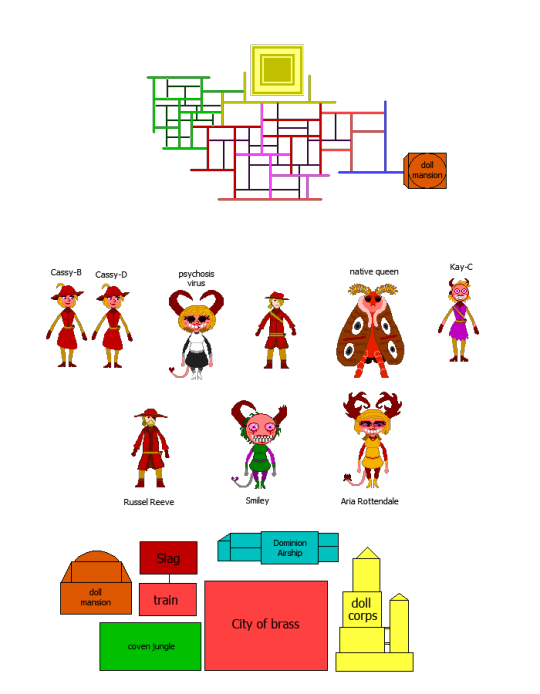
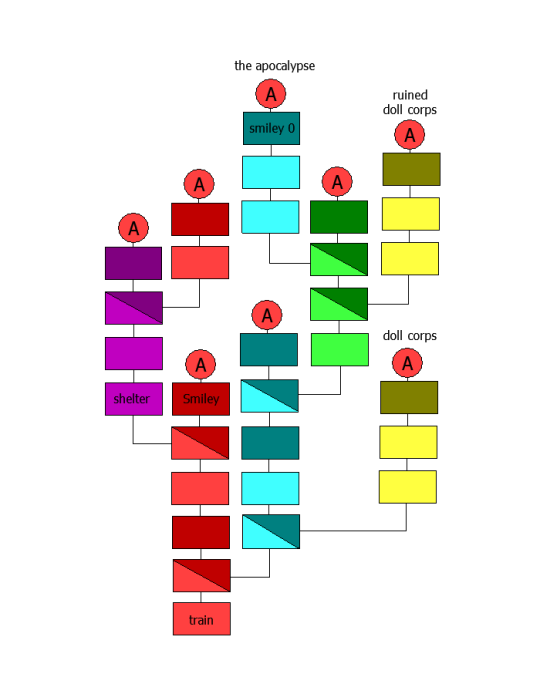
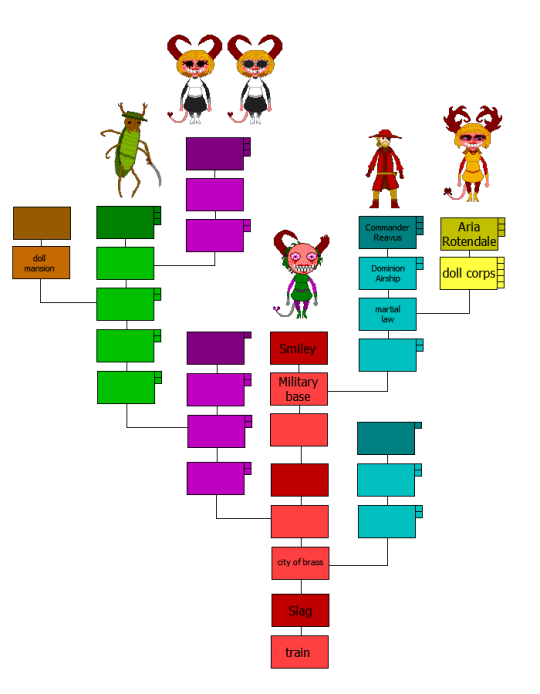
These show some of the planned routes. Red being the initial riot, leading to the doomed fight with Smiley, blue being a route where Cassy turns against the government (leading to the Commander Reeve and Double Cassy fight). Purple has her hide in a shelter, allowing her to survive the nuke and investigate the aftermath. Orange has her investigate the doll mansion and discover the maddened maid doll and Yellow would be an infiltration of the Dolls Inc. building to find the origins of the dolls. Each dead end is some kind of ending where either Cassy is inevitably defeated and contained, or destroyed, forcing her to rewind to a previous point. Aniway, like usual, there are some plans that dont quite fit this story, such as those maps that included the lore of the fountain in some way.
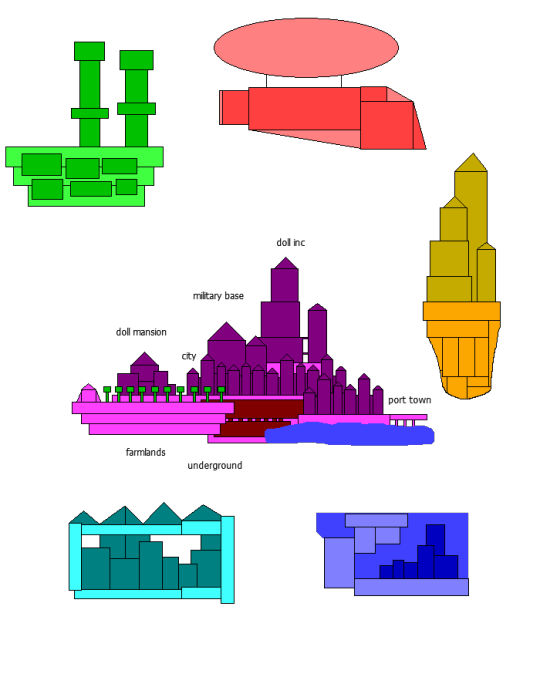
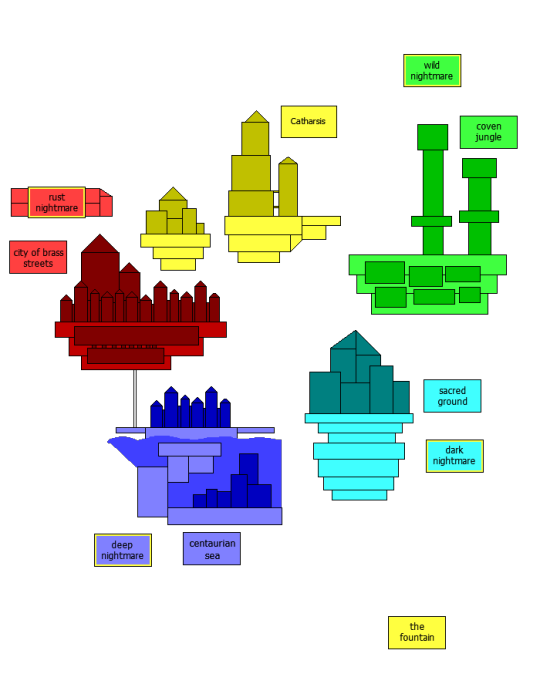
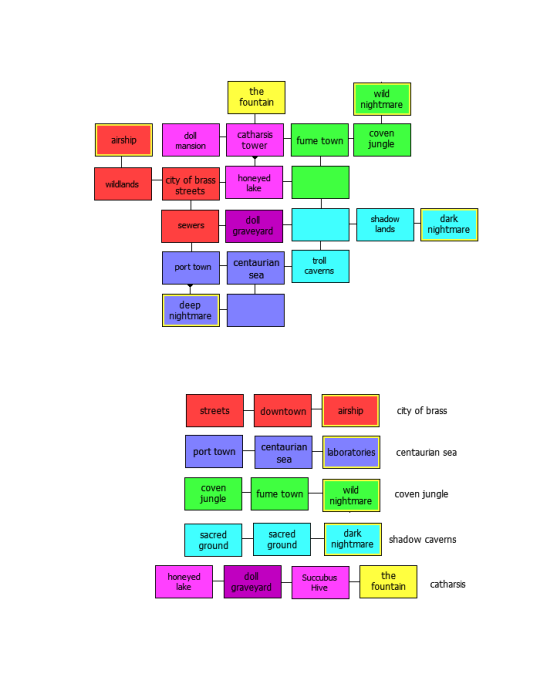
Aniway, this is it for this part of the retrospective, but lets end on a positive note. Despite this game being abandoned pretty early, some parts of it still exist in irredeamable today. Most notably is Lady moveset which is nearly identical to how Cassy played and even the concept of a robotic superweapon being the playable character has stuck from this point.
The forced grins of the dolls was incorporated into the edenian aesthetic in the form of their metal masks. And i even added a doll enemy late in development, with a bit of an updated look and lore that reference the original game story.

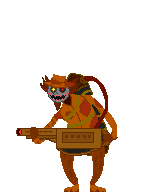

Anyway, i hope you enjoyed this tour of the defunct city of dolls. We are almost at the end of this retrospective, for the next part is the project that preceded irredeamable and where i began working on the setting that would flourish into the one you get to experience. Tune in for part 5: Project Watchmakers
#game development#indiegamedev#irredeamable#solodev#indie games#steampunk#android#androids#gamedev#original characters#character design#world design#indiedev#game design#animatronics
24 notes
·
View notes
Text

When I'm not running this blog, I'm a game designer, and my next game is about to be released soon Pre-registration for Ready Set Golf is now open on Google Play! DBring the party to the putting green with your very own disco ball bonus gift! If you like this blog, please do me a favor and pre-register it! It helps a lot with promotion, and my job!
54 notes
·
View notes
Text
Thinking about her (Sailor Moon Drops)

#it's been 4 years and I still miss it like crazy#I know a fan developer remade the game for Android but unfortunately I'm iOS#sailor moon#sailor moon drops
86 notes
·
View notes
Text

Memeless:
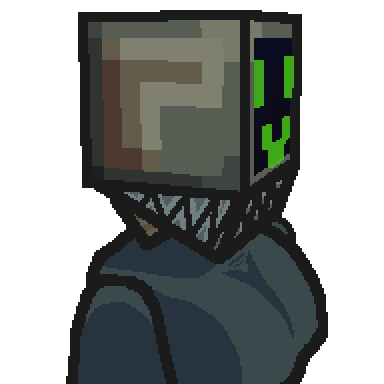
114 notes
·
View notes
Note
Hi there! I'm a twine game developer and I noticed you'd converted your games to be used on Steam and the Google Play store. I'd love to ask a few questions about this, if that's okay? 1. What tools/methods did you use to convert your Twine game to APK? Did you come across any limits with file sizes and game dependencies? e.g. Images pushing you over the 100mb limit? 2. As above, but what tools/methods did you use to get Twine into an executable for Steam? Were there any hiccups here? 3. If you had to make a text-based game with gamified elements and graphics (and you wanted it on Steam/Android, and to retain screen reader capabilities) would you do it in Twine again, or would you use another engine or solution such as Ren'py, Godot, Unreal, etc? Thank you so much for your time!
Hi.
Under the cut, you'll find a list of videos and links that helped me put the game on Steam and Android.
Feel free to ask any questions as you go through the process—some steps aren't detailed here, as a few things currently escape my memory.
To be able to publish your game on Steam, Google Play, or Apple store, you need to create an account.
Follow the steps on this video to create an account on Steam:
youtube
Or this one:
youtube
This is the Steam work page to start:
Follow this step for google Play
youtube
Twine game needs to be repacked as app before you can publish them.
To repack your Twine games, use these steps:

For Google, you'll need an Android repacker. You can use this one below: (This site is not free)
Here is how to use it (Skip to 3:01 minutes)
youtube
For point #1, I had no issues with size or image limit. Steam does give you different ways to upload depending on the size of your game.

For point #2, there will be hiccups and errors when you try to complete this checklist on Steam, but again, watch the videos and send some questions my way, I'll help as much as I can.

For point #3, I have no idea about the Screen Reader part. I know Twine is good for it, but personally, I don't plan on using Twine any longer, I'm moving to Renpy because it's are easier for me as of now.
Side note: Be sure to watch even more videos than those listed and don't hesitate to do additional research on Google whenever you feel stuck. Most questions and answers are already out there, so a quick search can often point you in the right direction.
If you still need help, feel free to send your questions my way!
14 notes
·
View notes
Text
i need a game that doesnt demonize sharks please where I can take care of them instead of the usual "shark attack" gameplay
#games#android games#ios games#game development#gaming#shark#shark games#game dev#mobile games#mobile gaming#gameplay
2 notes
·
View notes
Text
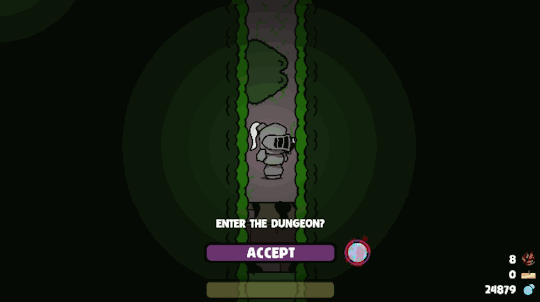
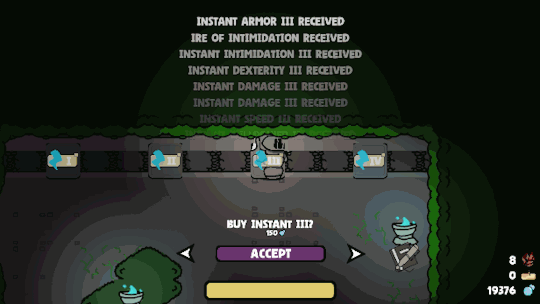
A brief pin update on my upcoming hand-drawn card collecting dungeon crawler, Deep Dark Wrath! Plunder and Collect Enchanted Cards, Apply and Strengthen your Adventurer with them, Find the Enemies' Source, Survive the endless onslaught, and Escape the Deep Dark Wrath!
I decided to update the visuals so the screenshots on my pages are also updated now xD. I've come so far these past few weeks, 4 big main version updates, lots of feedback received, lots of bugs fixed and mechanics tweaked. The dream of releasing a game is finally coming into a reality, thanks to the people who continue to support and people who at least look at this game xD.
The demo is available to be tried on Steam (Windows PC) and Itch (Windows PC and Android), the full version release will come to both platforms by the end of Q2 2024.
#gamedev#indie games#dungeon crawler#indiegamedev#pc games#video games#fireball#android#release#game development
5 notes
·
View notes
Text
Wave Beta release
This preview update has brought many changes into the game, such as new features, bug fixes and more. Leaving a feedback will much appreciated. Here are the changes that’ve been made:
✅Added:
Camera shake
Infinite waves
New trail
New graphics
A revive button
Settings
🔧Fixed:
Basic enemy wave spawning with different colours
Basic enemy wave getting stuck off screen and not coming
❌Removed:
Save profiles. The progress will be saved on a single save file
You can try it by clicking this link
#gamedev#devlog#game development#game leaks#unity game development#unity game engine#game programming#game project#indie games#indiegamedev#google play#android
3 notes
·
View notes
Text
Hello.....We are launching a new app idea... (https://tinyurl.com/hub383)
#apple music#app development#software development#apps#dating#android#mobile app development#personal development#developer#technology#web development#information technology#software#game development#partnership
2 notes
·
View notes
Text
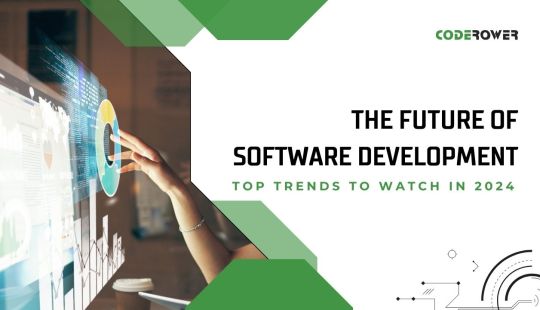
The Future of Software Development: Top Trends to Watch in 2024
Introduction:
The field of technology is always changing, but software creation is still at the cutting edge of brand-new ideas. As 2024 approaches, the trends that will shape the future of software development become more apparent. These trends will bring both exciting possibilities and challenges for businesses and workers. This blog post will talk about the most important trends to keep an eye on in 2024, covering everything from cloud-based solutions to custom software creation.
1. Custom Software Development
Custom software development is still an important part of modern businesses because it lets them make solutions that fit their exact needs. In 2024, we expect a huge increase in the need for unique software solutions as companies try to stand out in very competitive markets. Custom software development is the most adaptable and adjustable way to improve customer experiences or streamline internal processes. CodeRower specializes in creating custom software that enhances customer experiences and streamlines internal processes, making us a valuable partner for businesses looking to innovate.
2. Software Development Services
People are still looking for software development services because they need help and professionals to make cutting-edge apps. Outsourcing software development has become a smart choice for many companies, from startups to large corporations, that want to cut down on development time and time to market. CodeRower provides comprehensive software development services, enabling companies to leverage expert knowledge and achieve their goals efficiently.
3. Mobile App Development
Since smartphones and other mobile devices are becoming more popular, companies that want to connect with customers while they’re on the go still put a lot of emphasis on mobile app development. We think 2024 will be a big year for user-centred design and making new technologies like augmented reality (AR) and artificial intelligence (AI) work well.
4. Developers of Web Applications
Developers of Web applications are moving toward making experiences that are more engaging and flexible. Progressive web apps (PWAs) and single-page apps (SPAs) will likely become popular in 2024 as companies try to make the web faster and more interesting on all devices. CodeRower is at the forefront of this trend, ensuring that our web applications offer seamless user experiences.
5. Cross-device App Development
Making apps that work on multiple devices without any problems is possible with cross-platform app development, which has become more popular in recent years. By 2024, cross-platform tools like React Native and Flutter should have even better features, allowing developers to reach more people with less work.
6. Full-Stack Development
As of now, workers who are skilled in both front-end and back-end platforms are in high demand for full-stack development. They are seen as versatile and knowledgeable. There will be a greater need for full-stack coders who can offer complete solutions in 2024, so training and upskilling programs will be a big focus. CodeRower embraces this trend, equipping our team with diverse skills to handle both ends of development.
7. Web Design and Development
Web design and programming are very important for shaping the user experience and getting people to interact with your site. We expect to see a move toward simple and easy-to-use designs in 2024, with an emphasis on making things accessible and open to everyone. The digital world will also continue to change as new design trends like dark mode and neomorphism become more popular.
8. Cloud-Based Solutions
Modern infrastructure is built around cloud-based solutions, which are scalable, reliable, and cost-effective. We think that there will be even more movement toward cloud-native designs in 2024, with a focus on serverless computing and containerization. Multi-cloud and mixed-cloud methods are also becoming more popular, which will give companies more freedom and stability. CodeRower helps businesses adopt these solutions effectively, ensuring they maximize their cloud investments.
9. Continuous Integration and Continuous Deployment (CI/CD)
Continuous Integration and Continuous Deployment (CI/CD) techniques have changed the way software is developed by making it possible for teams to make code changes quickly and accurately. We expect a lot of people to use CI/CD processes in 2024, with a focus on automation, teamwork, and feedback loops. Employing CI/CD in their work processes can help companies release software more quickly and with higher quality.
10. Software testing and product testing
Software testing is still an important part of the development process because it makes sure that apps work as planned and meet quality standards. Automated testing systems and AI-driven testing tools will become more popular in 2024, making it easier for coders to find problems and fix them. For the whole development process, using shift-left testing methods will also help build a mindset of quality.
11. Custom Web App Development
When businesses hire custom web app developers, they want solutions that are made just for them and the problems and chances in their fields. Custom web apps are flexible, safe, and quick, and they can be used to make management systems inside the company or sites for customers. It’s going to be very popular to have custom web apps made in 2024 because companies will want to stay ahead of the competition and focus on digital change projects. CodeRower is well-equipped to deliver these tailored solutions.
12. Web Solutions
Many tools and services can be used to make web experiences that are live and engaging. Web tools, like e-commerce platforms and content management systems, help companies connect with customers, run their businesses, and grow. Developer tools, content management systems, and hosting services are likely to keep getting better in 2024, which will allow businesses to make web apps that are strong and flexible.
13. Develop Mobile Apps
Mobile apps are now essential for companies that want to reach people while they’re on the go and make the user experience better. Native mobile app development will be a big deal in 2024. To make sure users have a smooth and fast experience, developers will use platform-specific features and functions. Additionally, makers will be able to make new, feature-packed mobile apps by combining cutting-edge technologies like machine learning and blockchain.
14. App Development
The process of making apps for different devices, like phones, the web, and computers, is called app development. We expect a coming together of technologies and methods in 2024, which will make it easy for coders to make apps that work on multiple platforms. With the rise of low-code and no-code development platforms, companies can speed up the process of making apps and give regular people the tools they need to help make new solutions.
15. Emerging Technologies
Artificial intelligence (AI), machine learning (ML), bitcoin, and the Internet of Things (IoT) are just a few of the new technologies that will drastically change the way software is made in 2024. These technologies could completely change businesses, make tasks easier to do, and generate new ideas in all areas. AI and ML will be used more for predictive analytics, personalized experiences, and automating regular chores in 2024. Similarly, blockchain technology will keep shaking up old ways of doing business by making deals safe and clear, while IoT devices will make it easier to connect and gain insights from data.
16. Augmented Reality (AR) and Virtual Reality (VR) Development
Augmented reality (AR) and virtual reality (VR) have become powerful tools that could change many fields, from fun and games to education and healthcare. Hardware, software, and content creation tools will get better in 2024, which will lead to a lot of new AR and VR releases. AR and VR will be used more and more by businesses to make events more engaging, improve training programs, and connect with customers in fresh new ways.
17. Integration of Artificial Intelligence (AI) and Machine Learning (ML)
AI and ML are going to be very important in the future of software development, allowing smart automation, predictive analytics, and customized experiences. We expect to see more AI and ML built into software in 2024, as companies use data to make better decisions and run their businesses more efficiently. AI and ML will continue to change how software is made, used, and implemented, from robots and virtual helpers to recommendation engines and systems that look for scams.
18. Quantum Computing
Quantum computing is a big change in the way computers work. It can do processing that has never been seen before and could help solve hard problems that regular computers can’t. Future progress in quantum computing is expected to continue in 2024. This will have effects on software development in areas like security, optimization, and science modelling. Quantum computing isn’t being used by most people yet, but developers and businesses are starting to look into how it could be used and what it means for the future of software development.
19. Edge Computing
The rise of edge computing has made it possible for real-time processing and low-latency apps. Edge computing brings computer power closer to where the data is created. Edge computer technologies are likely to become more popular in 2024, especially in fields like IoT, manufacturing, and self-driving cars. Edge computing is an important part of the future of software development because it processes data closer to where it is created. This means that decisions can be made faster, bandwidth is used less, and dependability is improved.
20. DevOps and DevSecOps Practices
DevOps and DevSecOps practices are becoming more popular in software development because they help teams simplify processes, speed up delivery, and make security better. Further use of DevOps and DevSecOps methods is expected in 2024, due to the need for more cooperation, automation, and flexibility. DevOps and DevSecOps allow teams to create high-quality software faster and more safely by combining development, operations, and security into a single process. This meets the needs of today’s digital world, which is changing quickly.
21. Data Privacy and Security
Businesses and customers both care a lot about data privacy and security. Strong security measures are needed because of rising online risks and laws. Data protection and security will still be important in software development in 2024, with a focus on encryption, identification, and compliance. Developers will be very important in keeping private data safe and defence against new threats. They will do things like secure code, security testing, and vulnerability evaluations.
22. Low-Code and No-Code Development Platforms
Low-code and no-code development platforms have made software creation more accessible to everyone, letting business users and citizen coders make apps without needing to know a lot about coding. As businesses try to speed up their digital transformation efforts and meet the growing demand for custom software solutions, we expect the low-code and no-code market to continue to grow in 2024. Low-code and no-code systems help businesses quickly adapt to changing customer wants and market conditions by hiding complexity and cutting down on development time.
23. Ethics and Responsible AI
As AI and ML become more common, people are becoming more aware of the moral and social effects they can have. We think that ethics and responsible AI will get more attention in software development in 2024. Developers and companies will take more steps to make sure that AI-driven systems are fair, open, and accountable. Researchers will have to think about how their work affects other people and put ethics first throughout the whole development process. This includes methods to reduce bias and ethical AI models and standards.
24. Remote Collaboration and Distributed Teams
The move to working from home has completely changed how teams work together and talk to each other. In software development, distributed teams are now the rule. As companies get used to mixed work models and see the benefits of remote work, we expect them to put more money into tools and platforms for online teamwork in 2024. With tools like virtual whiteboarding, videoconferencing, project management, and version control, online collaboration platforms make it easy for teams to work together even when they are in different places. This encourages creativity, innovation, and efficiency.
25. Diversity and Inclusion in Tech
Inclusion and diversity have become very important issues in the tech industry, as more people realize how important different points of view and experiences are for fostering creativity and innovation. We expect that more will be done in 2024 to support diversity and inclusion in software development. For example, mentoring programs, diversity training, and hiring methods that are open to everyone will be given top priority by companies. Businesses can get the most out of their teams and encourage an atmosphere of innovation and success by making the workplace more fair and open to everyone.
In conclusion:
In 2024, the future of software development will be marked by new ideas, quick changes, and a never-ending quest for perfection. To stay competitive in today’s digital world, businesses and workers need to keep up with the latest trends and changes in everything from new technologies like AI and quantum computing to well-known practices like DevOps and data security. Software engineers can change the future of technology for years to come by being open to change, encouraging teamwork, and putting ethics and fairness first.
Are you ready to take your software development to the next level in 2024? At CodeRower, we specialize in custom software solutions tailored to your unique business needs. Whether you’re looking to enhance your mobile app, streamline your operations with cloud-based technologies, or integrate AI and machine learning into your processes, our expert team is here to help.
Contact us today to discuss how we can assist you in navigating the latest trends and achieving your development goals. Let’s build the future together!
#software development#app development#web app development#web development#android app development#ios app development#custom software development#game development#custom app development#blockchain development#full stack developer#website development#cloud computing
3 notes
·
View notes
Text

I don’t just play, I make games too! 😅 Please wishlist #JeepneyStories on #Steam! (link in bio) Demo also out at @itchiogames ! #indiegame #gamedev #indiegamedev #screenshotsaturday #kuyimobile #defold
#mobile games#kuyi mobile#video games#game development#android#ios#indiegamedev#indie games#steam games#wishlist
1 note
·
View note
Text
BreakFree - Virus Shooter : Update Gameplay! Swap can now be unlocked with in-game items.
Download for free on iOS and Android!
#free#game#gamedev#gaming#kronixstudios#game design#kronix#mobileapp#design#free game#cyberpunk aesthetic#cyberpunk game#retro gaming#retro aesthetic#retro#viruses#virus#corona virus#disease control#ios#ios app development#app store#google play#androidgames#android app development#android#video games#gamers#video gaming#game over
2 notes
·
View notes
Text
Запись №29
Приветствую!
На прошлой неделе занимался новым уровнем.
К сожалению часть прототипа куда-то потерялась (Скорее всего я удалил эту часть) и мне пришлось ее восстанавливать.
После того как я ее восстановил, появилась проблема с управлением. Я хочу чтоб на уровень канализации, можно было попасть во время рана с основного уровня, поэтому мне нужно чтоб все бафы и д��бафы сохранялись при переходе. Получается что просто написать отдельный скрипт для уровня не достаточно и тут нужна архитектура по лучше, но я вроде как справился.
Это все хорошо, но на этом уровне есть гигантская головоломка. Я понятия не имею как лучше поставить камеру, потому что она упирается в препятствия и игрок из-за этого на время лишается обзора + выглядит это не очень. Скорее всего, у кого-то будет очевидная мысль, предложить делать объекты прозрачными при приближении к камере или что-то вроде этого, но нет. Я не хочу это делать, потому что мне это не нравиться. Вот так все просто. Да я сумасшедший и буду ломать голову над такой мелочью.
Тяжеловато еще от того, что это всего лишь прототип и очевидно он очень сырой. Придется очень хорошо его продумать, поэтому пока что будут только эксперименты, для того чтоб сформировать максимально четкое виденье. Надеюсь справиться с этим за неделю.
Это все.
Поддержать: https://boosty.to/havaleonblog/donate
5 notes
·
View notes
Text
remembered a wonderful time when i didn’t know how to download images on my phone, used internet explorer and opera and played flash games
want to go back</3
#nostalgia#old internet#and tragedy of squirrels oh my#and android easter eggs and no mobile internet and songs downloaded to a cheap player and films that take several hours to download and cds#and those two sites with winx flash games which actually had a huge number of games on a variety of topics#including a game in which you are the admin of a club that you develop and feed a rock band beer giving them energy to perform#i lost it forever and i miss it so much
3 notes
·
View notes